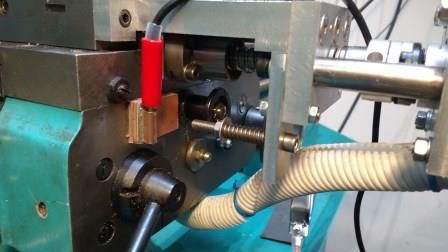After quite a lot of further experimentation I have settled on this arrangement of an "X" home switch on my Super 7 conversion.

Basically it is an isolated copper pad, consisting of a rectangle of PCB glued on top of 1/4" Tufnol. Soldered to the PCB is a 4mm receptacle, actually one of the terminals from a piece of "chocblock", to take a 4mm plug that connects to the digitising input of my BoB. The whole thing is attached to the face of the apron with (blush) superglue. A bracket on the stepper mounting carries a 50mm stainless bolt with its end formed to a smooth dome to contact the pad. The bolt is a running fit through the hole in the bracket and is spring loaded, so it has a bit of "give" if the slide over-travels. Note that the cable to the plug is screened, the screen being earthed only at the controller end to avoid an earth loop.
The Mach 3 homing and limits config is set up to home at 2 mm/minute. One simply jogs the slide in until the bolt is a mm of so away from the pad, makes sure the plug is connected, and clicks Set X Home – the slide moves slowly until the pad earths, then stops. My convention is to use this position as the X zero for machine coordinates, so having homed the slide I just click on "Zero World X".
This is part of an offset calibration system I'm working on, the idea being that having calibrated a set of tools in Dixon toolholders I'll be able to set the lathe to turn to a specified diameter with a calibrated tool without having to reference again to the material diameter.
As far as I can tell, since the material can be chucked in any position along the Z axis, there is no particular benefit in having a Z home switch.
Nick Hulme.







